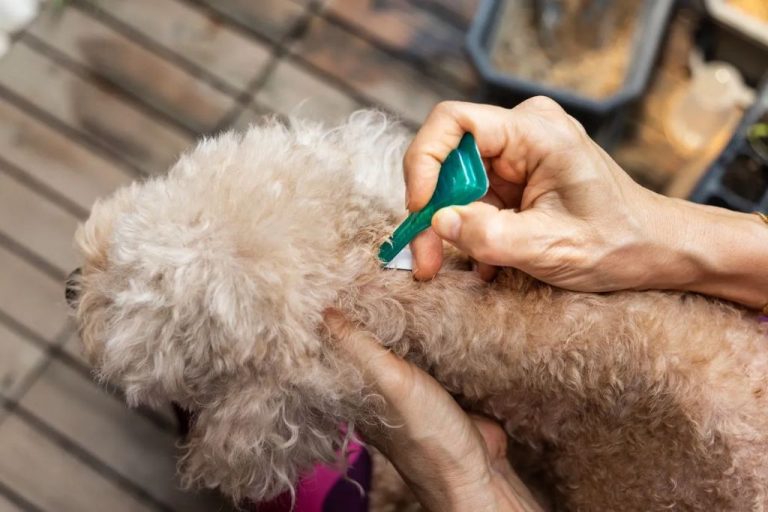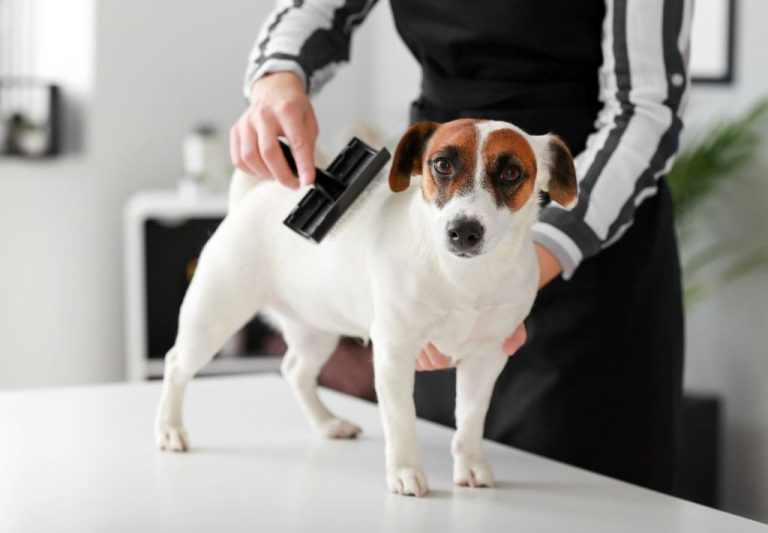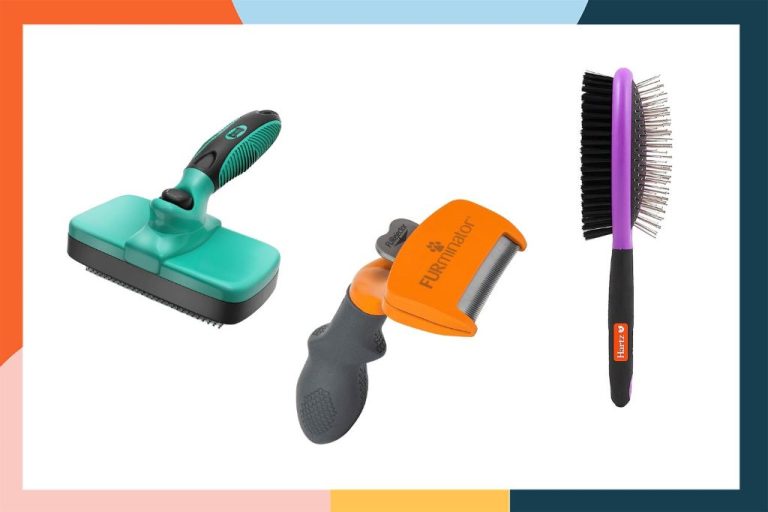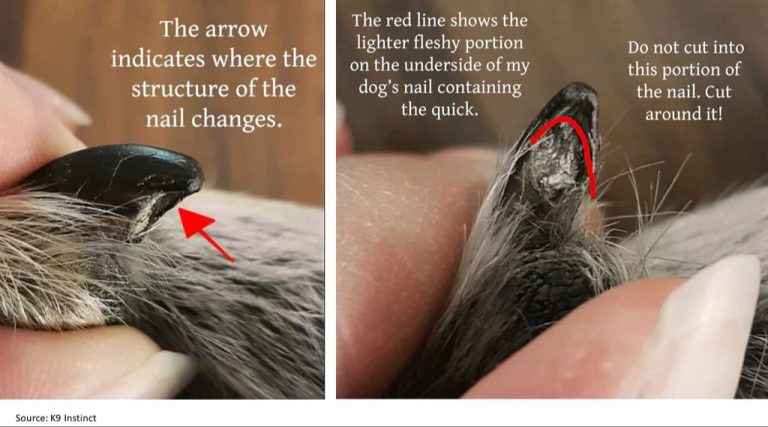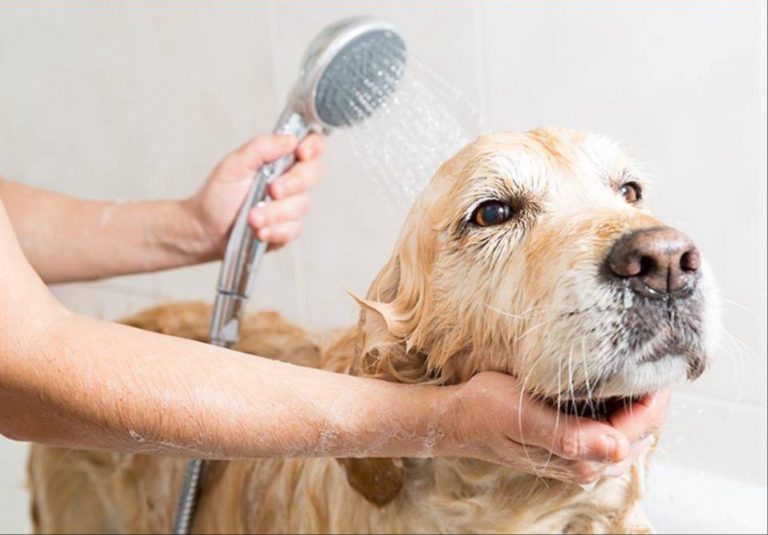Grooming Tips For Puppies: Starting Good Habits Early
Importance of Early Grooming
It’s important to start grooming your puppy at an early age. This helps your puppy get used to being handled and groomed regularly from a young age. Early, positive experiences with grooming can make it much easier as your dog grows up. According to the experts at K9U Chicago, “Acclimating your puppy or dog to grooming habits and activities when they are young will help make grooming a much more pleasant and painless process as they get older” (source).
Regular grooming also allows you to closely inspect your puppy’s skin and coat. You can identify any issues like rashes, allergies, parasites, and infections early on. Finding and treating any problems quickly improves your puppy’s health and comfort.
Grooming time is also a great opportunity for you and your puppy to bond. As you gently handle your puppy, it builds trust between you. Your puppy will come to see grooming as a calm, relaxing time of positive attention.
Bathing Tips
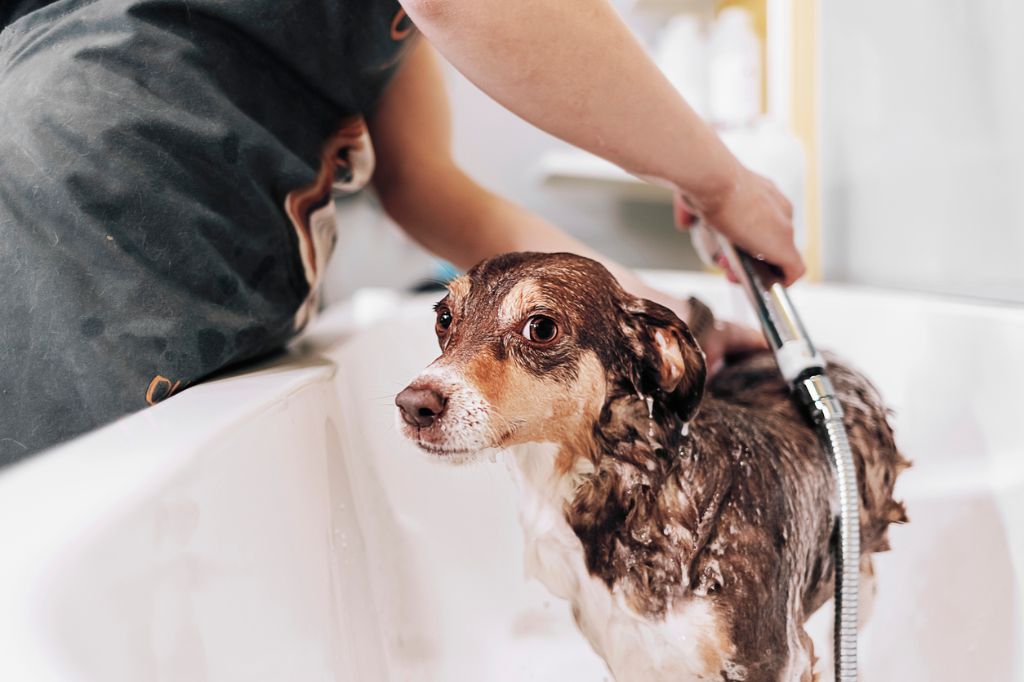
When bringing a new puppy home, it’s best to start with just damp towel wipes to get them used to the process before jumping into full baths. According to the American Kennel Club, puppies do not need frequent bathing, especially when they are very young. Their skin is more sensitive and prone to drying out from overbathing.
Once you do give your puppy a full bath, be sure to use a gentle puppy shampoo formulated for their sensitive skin. Shampoos made specifically for puppies will be tearless and mild. According to Parkland Animal Clinic, most veterinarians recommend bathing puppies once a week unless any irritation develops.
As a general guideline, the average puppy only needs a full bath around once a month. Bathing too frequently can dry out their skin and coat. However, certain breeds like Labradors tend to get dirtier and need more frequent baths. Be sure to monitor your puppy’s skin and adjust bathing as needed. Their first year is an important time to start good grooming habits.
Sources:
https://www.parklandanimalclinic.com/post/how-many-times-should-i-wash-my-puppy-.html
Brushing Tips
Regular brushing helps distribute skin oils throughout your puppy’s coat and prevent matted fur. Start brushing as soon as you bring your puppy home.
Use a soft brush made specifically for puppies to avoid scratching their delicate skin. Look for brushes with natural bristles. You can find high-quality puppy brushes at your local pet supply store or online.
Start with very short, gentle brushing sessions of just a few minutes. Make it a calm, pleasant experience. Give your puppy praise and treats for sitting still during brushing. This will help them get used to grooming from an early age.
According to Animal Humane Society, you should brush your puppy every couple of days no matter the length of their coat. Increase brushing frequency as they grow up and their adult coat comes in. Regular brushing when they’re young gets them used to the routine.
Nail Trimming Tips
It’s important to start trimming your puppy’s nails early to get them used to the process. Clip just the very tips of the nails, being careful not to trim too short and hit the quick, which will be painful and cause bleeding. Use clippers designed specifically for puppies or small breed dogs, which will be smaller and sharper (AKC).
Give your puppy praise and a small treat after trimming each nail to reinforce that nail trims are a positive experience. Go slowly and keep sessions short. If your puppy gets squirmy, take a break and try again later (Chewy). With regular, positive nail trims from a young age, your puppy will learn to tolerate them well as an adult.
Ear Cleaning Tips
Proper ear cleaning is an important part of grooming puppies. It’s best to start this habit early so pups get used to having their ears handled. However, it’s essential to be very gentle and careful when cleaning puppy ears.
Never use cotton swabs (Q-tips) to clean inside a dog’s ears, as this can damage the sensitive inner ear. Instead, use cotton balls or pads. Gently wipe around the outer ear only, using a dog ear cleaner recommended by your veterinarian. Don’t insert anything deep into the ear canal.
Only clean the parts of the ear you can see. Let your vet do any deeper cleaning needed. Puppies often don’t need much ear cleaning unless they have an infection. Check with your vet on the proper schedule for your pup.
Make ear cleaning sessions positive. Give your pup a treat afterward so they associate it with something pleasant. Be patient, go slowly, and keep sessions brief when puppies are young.
Monitor your puppy’s ears for signs of trouble like redness, odor, discharge, head shaking, or scratching at their ears. Let your vet know right away if you notice anything concerning. Regular ear checks are part of keeping your pup’s ears healthy.
Eye Care Tips
Keeping your puppy’s eyes clean is an important part of grooming. Puppies often get crusty discharge or tearing in the corners of their eyes, which should be gently wiped away daily with a soft, damp cloth or cotton ball and warm water. Be sure to wipe from the inside corner of the eye outwards so you don’t introduce any bacteria into the eye1.
Check your puppy’s eyes daily for any signs of infection like redness, swelling, squinting, pus, or excessive discharge. See your veterinarian promptly if you notice any eye issues. Left untreated, eye infections can worsen and cause permanent damage.
Also regularly trim the hair around your puppy’s eyes so it doesn’t irritate the eyes or scratch the corneas. Use blunt scissors and be very careful not to nick the skin around the eyes.
Teeth Brushing Tips
Brushing your puppy’s teeth early and regularly helps prevent plaque buildup and promotes healthy gums and teeth. You should start brushing as soon as you bring your puppy home. Use a finger brush and special puppy toothpaste, not human toothpaste which can upset their stomach. Brush gently along the gumline daily for 30-60 seconds. Make it a calm, positive experience with lots of praise and treats so your puppy looks forward to teeth brushing time.
According to The Spruce Pets, brushing daily is recommended, but even a goal of two to three times a week is a good start. Always offer praise and rewards for cooperating.
As recommended by Healthy Smiles, apply a pea-sized amount of dog toothpaste and let your puppy lick it first. Then gently place the brush under their lip and brush their teeth in a circular motion.
Rewarding Good Behavior
An important part of grooming puppies is ensuring the experience is positive and rewarding. This helps establish good habits and prevents fear or dislike of grooming procedures. Here are some tips for using rewards effectively:
Give treats and praise during and after grooming. Provide your puppy with small treats like bits of chicken, cheese, or dog treats throughout the grooming process. Offer praise and petting as well. This connects the rewards directly with grooming.
Keep sessions short and positive. Limit initial grooming sessions to just a few minutes. End on a good note when your puppy is still comfortable. Short, frequent sessions prevent restlessness. Gradually increase session length as your puppy becomes accustomed to the process.
End on a good note. If your puppy seems anxious or squirmy, redirect to an easier task then stop. Always finish with something your puppy enjoys so grooming ends positively. This avoids reinforcing dislike of certain procedures.
Rewards make grooming time fun for puppies. Be patient, keep sessions brief, and consistently reinforce wanted behaviors. With persistence and positivity, your puppy will accept grooming as an enjoyable routine.
Being Patient
Grooming can be an uncomfortable or scary experience for puppies at first. It’s important not to scold or punish them for squirming or trying to resist. Instead, gently restrain the puppy and keep trying in a calm, patient manner. With enough repetition, the puppy will get used to the process.
Make grooming a regular habit starting early in the puppy’s life. Try to handle the puppy’s paws, brush their coat, and inspect their ears daily so they view it as a normal part of their routine. Give treats and praise during and after grooming to reinforce it as a positive experience. Be patient if the puppy resists at first – don’t force things too quickly. Work up to longer grooming sessions gradually as the puppy becomes more comfortable.
With a slow, gentle, and consistent approach, you can help any puppy get accustomed to grooming without scolding or punishment. The key is patience, repetition, and making it a habit from a young age.
Regular Vet Checks
It’s important to take your puppy to the vet regularly for checkups and vaccinations. According to sources like Broad Street Vet and the AKC, most experts recommend taking your puppy to the vet within the first few days after bringing them home, then every 3-4 weeks until they are 16 weeks old.
At these vet visits, the vet will do a full physical exam and look for any potential health issues, including checking the skin and coat. This is a good opportunity to discuss any grooming concerns you may have with your vet and get their professional advice. For example, you can ask the vet about any skin irritations or issues with shedding that you’ve noticed.
Your puppy’s vaccination and deworming schedule will also be very important to follow during these early months. Keeping up with their shots protects them from dangerous diseases and parasites. According to Chewy, core vaccines for puppies include DHPP, rabies, and bordetella. Following the recommended timeline ensures your puppy builds proper immunity.
Regular vet checkups those first few months allows the vet to monitor your puppy’s development and health. Bring up any grooming or care concerns so you can get expert advice tailored to your puppy. Keeping up with their vaccination schedule also protects them during this critical growth phase.

